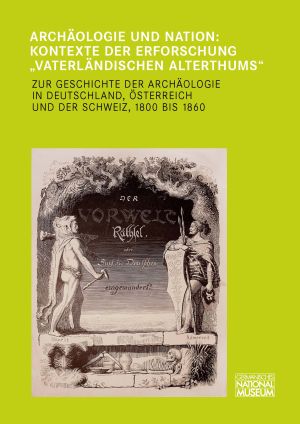Zitationsvorschlag
Lizenz (Kapitel)

Dieses Werk steht unter der Lizenz Creative Commons Namensnennung - Nicht-kommerziell - Keine Bearbeitungen 4.0 International.
Veröffentlicht
Frühe archäologische Denkmalpflege in der Habsburgermonarchie
Ab der Mitte des 18. Jahrhunderts entstanden in ganz Europa Gelehrtenvereinigungen, die als Akademien bezeichnet wurden. Diese Zusammenschlüsse institutionalisierten nicht nur die Forschung, sondern verstanden die Entwicklung und Verbreitung der Wissenschaft als allgemeine Aufgabe für die gebildete Öffentlichkeit, wobei Geschichte besondere Berücksichtigung fand. Gottfried Friedrich Klopstock regte, nachdem schon Wilhelm Leibniz mit seinem Vorschlag gescheitert war, 1765 neuerlich die Gründung einer Akademie in Wien an, um die literarische und wissenschaftliche Produktion zu fördern. Der Beweggrund für seine Abfuhr war die allgemein geringe Wissenschaftsfreundlichkeit des Kaiserhauses, die sich in vielerlei Hinsicht belegen lässt. Der Mythos einer glanzvollen Vergangenheit und gemeinsamen Abstammung, von den neuen archäologischen Forschungsergebnissen scheinbar auch wissenschaftlich untermauert, bekräftigten die nationalen Vorstellungen des 19. Jahrhunderts und machten archäologische Denkmale zu sichtbaren Zeichen historischer Tatsachen und gemeinsamer Herkunft. In vielen Staaten Europas wurde die gemeinsame Geschichte samt ihren archäologischen Zeugnissen daher integrierender Bestandteil der nationalen Identität. Während sich auch in der Habsburgermonarchie ein zunehmendes Verständnis für das römische Erbe erkennen lässt, betrachteten die unterschiedlichen Nationen im Vielvölkerstaat die Erforschung der ur- und frühgeschichtlichen Denkmale als Teil ihrer eigenen Geschichte, sodass sich daraus keine einigende, vielmehr eine trennende Wirkung ergab. Diese einander widerstrebenden Tendenzen machten die gesamtstaatliche Behandlung des Denkmalbestandes unmöglich. Dazu kam, dass die Habsburger im Unterschied zu anderen Herrscherhäusern die Altertumswissenschaft nicht aktiv förderten. Einige wenige Habsburger, wie Leopold II., zur Zeit seiner Regentschaft als Großherzog der Toskana, oder Erzherzogin Maria Anna, bildeten eine Ausnahme. Dieser allgemeinen Tendenz steht die Entwicklung in Kronländern und Teilreichen entgegen, in denen sowohl engagierte Gelehrte grundlegende Erkenntnisse zum Bestand und zur Bewahrung des archäologischen Erbes lieferten als auch die ersten Altertumsvereine lange vor der Mitte des 19. Jahrhunderts entstanden, während jener der Haupt- und Residenzstadt Wien erst 1853 gegründet wurde. In dieselbe Zeit nach der Revolution von 1848 fallen die Gründung des Institutes für Österreichische Geschichtsforschung und der für die Denkmalpflege zuständigen Zentralkommission.







